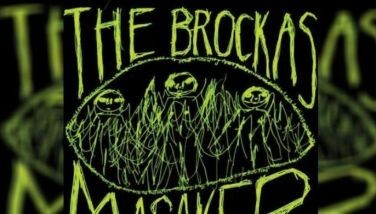Grand-slam winner in more ways than one
November 10, 2001 | 12:00am
 Toward the mid-1950s, Nida Blanca began her reign as the Queen of Philippine Movies – along with Gloria Romero of Sampaguita Pictures.
Toward the mid-1950s, Nida Blanca began her reign as the Queen of Philippine Movies – along with Gloria Romero of Sampaguita Pictures.
At the peak of her fame, one ugly incident that began as a mere traffic altercation almost ruined her career. It started one day on her way to school at University of Santo Tomas where she was taking up Liberal Arts. Driving her own car, she got into a verbal tussle with a jeepney driver over right of way. Their argument ended up with Nida slapping the driver.
The driver – to get back at Nida – sought the attention of media by complaining to the late radio commentator Rafael Yabut. There were calls for a boycott of her films which – to the relief of the LVN people – did not prosper. Her movie with Jaime de la Rosa, Batanguena – shown at the height of the controversy – still broke box-office records that year.
At the time that her name was being smeared in public, Nida – without her knowledge – gained some sympathizers among the members of the Hukbalahap movement. The Huks wanted to send surrender fillers to the government and needed someone to mediate for them. They chose Nida to do the job and she readily agreed to meet with them – unmindful of her own safety. In the end, Nida turned out to be successful with her mission and received praises for helping the rebels return to a normal life in society.
After her mother company, LVN Pictures, stopped producing movies, Nida decided to go freelance and, at one point, even put up her own movie company in partnership with Nestor de Villa.
Prior to this, she got married to Victorino "Ruth" Torres whose family ran a popular optical shop. When her marriage to Torres failed, gossips even pictured her as a gold-digger who married Torres for his money, but dumped him when she found out he really had nothing. Of course, this was an utterly baseless and unfounded accusation because Nida – as a top star – was already very secure financially.
But such is the price of stardom. In the early ’60s, her only daughter, Kaye Torres, was rumored to have died after a severe bout with H-fever. Nida had to speak on national television – in The Nida-Nestor Show – and assure the public that her daughter was alive and well. Kaye, in fact, grew up to be a fine daughter and even had a short stint in show business in early ’80s. She has since migrated to the US and is expected to come home any day now to bury her mother.
By the 1960s, Nida found herself shuttling between movies and television. On ABS-CBN, her comedy program, The Nida-Nestor Show (which started with a dance number and was followed by a skit) aired regularly on Thursday nights.
On Sunday evenings, Nida had another program – a comedy-fantasy called Ang Mahiwagang Daigdig ni Doray where Nova Villa appeared as her sidekick. And once a week, Nida and Bert Leroy were the main featured artists in the Tuesday edition of the noontime show, Stop, Look & Listen. (After the cancellation of the three shows, Nida was given a new sitcom called Wala Kang Paki which also featured Luis Gonzales, Caridad Sanchez, Ronald Remy and Romy Lapuz.)
Around this time, Nida was also teaming up regularly with a new screen partner in the movies: Dolphy. Together, they did riotous comedies (mostly for RVQ Productions) – one of which was Tiririt ng Maya, Tiririt ng Ibon (also with Eddie Gutierrez and Pilita Corrales).
In 1973, Ading Fernando created a new sitcom for RPN-9. It was going to be called Kapag May Tiyaga, May Nilaga (changed to John & Marsha after a few weeks). It was going to star Dolphy as John Puruntong, a poor, but highly-principled man who raises his family in a humble shanty. Playing wife to John was Marsha, the only daughter of a fabulously rich widow. Initially tapped to play Marsha was Helen Gamboa, except that she was just starting her own family off-screen with now Sen. Tito Sotto and was not ready to commit to a regular TV show. It was only then that Nida Blanca’s name was brought up and she became identified with the part until way after the series was cancelled in 1989.
Aside from John & Marsha, Nida also did other TV shows for RPN-9 in the ’70s. Among these were Mana-Mana ’Yan, a sitcom with Chichay and the musical-comedy program, The Nida-Lita Show with Lita Gutierrez whose chemotherapy treatments Nida financed when the former was stricken with cancer in 1986.
Television proved to be more generous in bestowing awards to Nida Blanca. She won Best Actress in the CAT Awards twice and the PATAS thrice. (Those were major achievements because – as a comedy actress – she was pitted against dramatic actresses in those awards races.)
In the movies, aside from winning the Best Supporting Actress honors in the very first FAMAS night in 1952 (for Korea), the only other trophy she had received by then was another Best Supporting Actress award in the first Metro Manila Film Festival (for Bato-Bato sa Langit in 1975).
In 1983, when she did the Maryo de los Reyes’ drama Saan Darating ang Umaga, everyone thought she was finally going to win her first Best Actress trophy in the movies. She was nominated in FAP Awards, all right, but lost to Vivian Velez (for Pieta).
Two years later, Lino Brocka approached her to play mother to Aga Muhlach in Miguelito Ang Batang Rebelde and finally, she won Best Actress in the CMMA, Urian, Star and FAP Awards. She could have scored a grand slam, except that she lost in the FAMAS – again, to Vivian Velez (for Paradise Inn, this time).
The following year, she finally got her grand-slam win for playing Dina Bonnevie’s unforgiving mother in Magdusa Ka.
In 1987, she was back in the awards race and won Best Supporting Actress in the FAMAS, FAP and CMMA for Kid, Huwag Kang Susuko.
Then, two years ago, she was again voted Best Actress by major award-giving bodies for her performance in Sana Pagibig Na.
Last year, the Manunuri ng Pelikulang Pilipino accorded her the highest honors by giving her the Natatanging Gawad Urian for all her outstanding contributions in the field of local films.
BrandSpace Articles
<
>
- Latest
- Trending
Trending
Latest
Trending
Latest
Recommended
February 15, 2025 - 12:00am





























